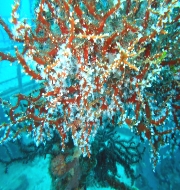Worst coral die-off recorded at Australia’s Great Barrief Reef
Scientists have recorded worst mass coral bleaching event on Australia’s Great Barrier Reef. It has killed more corals than ever before, sounding the alarm over the delicate ecosystem.
It is estimated nearly two-thirds of 2,300-kilometre long reef or 700 km stretch of coral in the Great Barrier Reef’s northern part have died in the past nine months.
This is the worst die-off ever recorded in Great Barrier Reef and also the largest ever recorded anywhere. However, the central and southern sections of the reef are fared far better, with only 6% and 1% of the coral dead, respectively.
What are Corals reefs?
- Coral reefs result from the natural work of little polyps (few millimeters long) is budded on top of one another. They are the most biologically diverse ecosystems of the planet
- Over centuries, shells (mostly made up of Calcium Carbonate) of these corals combine to form the exotic shapes of coral reefs.
- Tiny differences in the anatomy of each polyp species mainly affect the shape of their shells and produce the exotic shapes of each reef.
- Conditions required for growth of corals: Warm tropical oceans with minimum temperature of 20 degree. They are primarily located between 30 degree north and 25 degree south latitudes where water temperature favours the growth of coral organisms; Transparent parts of ocean bodies; Oceanic water must free of sedimentation; it should have relatively low salinity.
What is coral bleaching?
- Coral bleaching causes corals to expel tiny photosynthetic algae, draining them of their colour. It calcifies the corals to turn into white.
- Algae are vital to the coral, which uses the organic products of photosynthesis to help it grow. The loss of algae makes it vulnerable to disease and it will eventually die.
- When a coral bleaches, it is not dead. They can recover if the water temperature drops and the algae are able to re-colonise them.
- Reasons: It occurs when abnormal environmental conditions, such as warmer sea temperatures.
- In recent times unusual warm ocean water is mainly heated by man-made climate change and the natural El Niño climate pattern.
About the Great Barrier Reef
- It is the biggest coral reef system in the world composed of over 2,900 individual reefs. It was recorded as a World Heritage site in 1981.
- The reef is located in the Coral Sea, north east of Australia and covers an area of approximately 348,000 sq km.
- It is credited as the world’s biggest single structure made by living organisms and is visible from the outer space.
Month: Current Affairs - November, 2016


